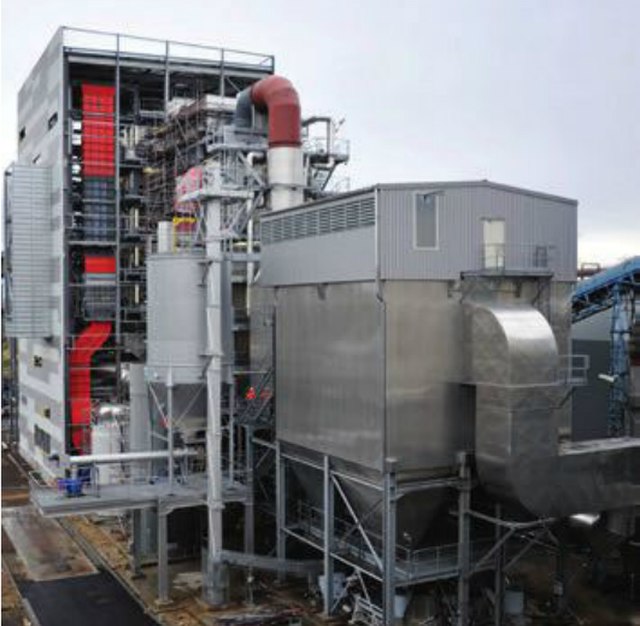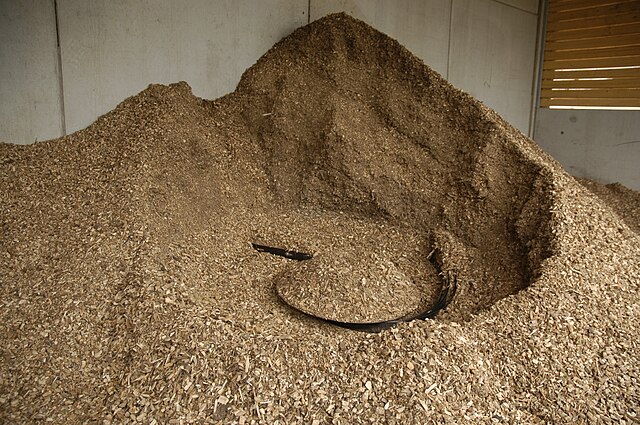Biomass, in the context of energy production, is matter from recently living organisms which is used for bioenergy production. Examples include wood, wood residues, energy crops, agricultural residues including straw, and organic waste from industry and households. Wood and wood residues is the largest biomass energy source today. Wood can be used as a fuel directly or processed into pellet fuel or other forms of fuels. Other plants can also be used as fuel, for instance maize, switchgrass, miscanthus and bamboo. The main waste feedstocks are wood waste, agricultural waste, municipal solid waste, and manufacturing waste. Upgrading raw biomass to higher grade fuels can be achieved by different methods, broadly classified as thermal, chemical, or biochemical.
Wood pellets is an example of biomass used for bioenergy production, usually for heating purposes.
Miscanthus × giganteus, a perennial grass can also be used for bioenergy production.
Sawdust is residue from the wood processing industry.
Alternative system boundaries for assessing climate effects of forest-based bioenergy. Option 1 (black) considers only the stack emissions; Option 2 (green) considers only the forest carbon stock; Option 3 (blue) considers the bioenergy supply chain; Option 4 (red) covers the whole bioeconomy, including wood products in addition to biomass.
Bioenergy is a type of renewable energy that is derived from plants and animal waste. The biomass that is used as input materials consists of recently living organisms, mainly plants. Thus, fossil fuels are not regarded as biomass under this definition. Types of biomass commonly used for bioenergy include wood, food crops such as corn, energy crops and waste from forests, yards, or farms.
Sugarcane plantation to produce ethanol in Brazil
A CHP power station using wood to supply 30,000 households in France
Biomass plant in Scotland.
Wood chips in a storage hopper, in the middle an agitator to transport the material with a screw conveyor to the boiler








